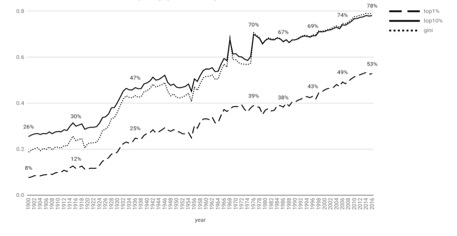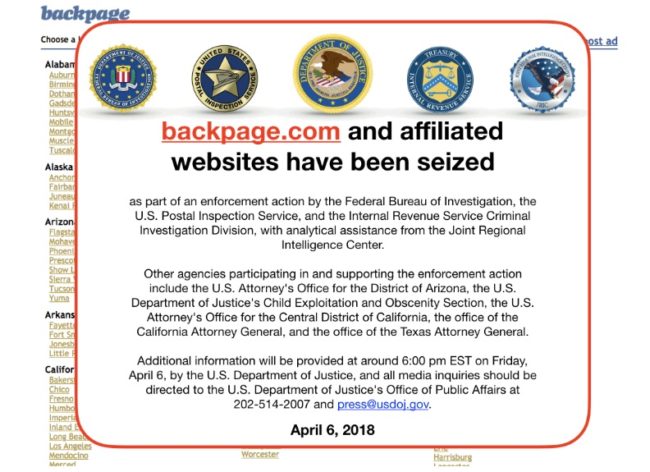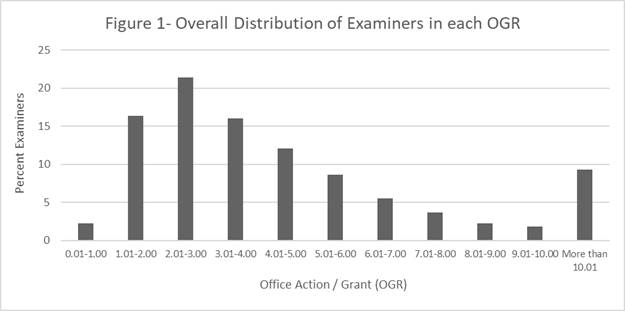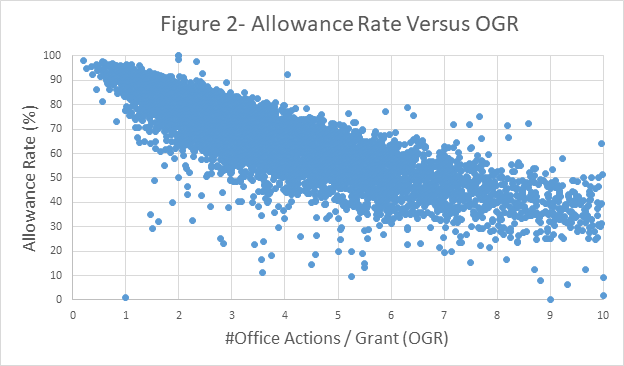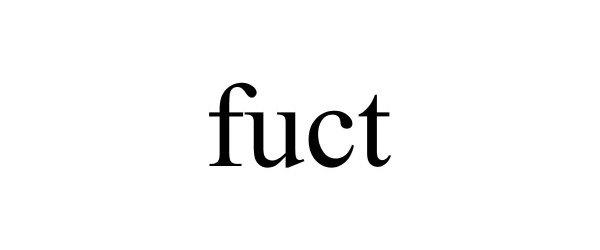USPTO Director Andrei Iancu gave the keynote address at the April 11, 2018 Patent Policy Conference hosted by the U.S. Chamber of Commerce. The following is an excerpt:
… Dr. Eli Harari … risked everything: his career, his finances, and his family. That first company actually did not work out well, but a few years later, Harari risked it all again and co-founded a new company, which he ultimately called SanDisk. At SanDisk, Harari built upon his EEPROM technology, added critically important new inventions, and perfected flash memory data storage. And he obtained patents, including on how to turn memory chips into reliable systems. Harari’s flash technology came to be used almost universally in devices like digital cameras and cell phones. In 2016, Western Digital acquired SanDisk for $19 billion. But think about it: Without patents, how could someone like Dr. Harari risk everything, put aside his secure career at an established company, and strike it on his own?
As Dr. Harari told me: “The only asset you have is your idea. If you have no way to protect your idea, you are at the mercy of the next bad guy. The U.S. patent system is genius, really the bedrock foundation of capitalism.” Harari’s sentiment was echoed by President Ronald Reagan, who said in 1982: “Throughout our Nation’s history, the patent system has played a critically important role in stimulating technological advances.”
How true that is.
Yet today, our patent system is at a crossroads. For more than just a few years, our system has been pushed and pulled, poked and prodded. The cumulative result is a system in which the patent grant is less reliable today than it should be. This onslaught has come from all directions: There has been major reform legislation, and proposed legislation. There have been massive changes brought about by major court cases. And the USPTO itself has taken a variety of actions in an effort to implement these changes. Plus, importantly, the rhetoric surrounding the patent system has focused relentlessly on certain faults in, or abuses of, the system—instead of the incredible benefits the system brings to our nation. …
Still, we are at an inflection point with respect to the patent system. As a nation, we cannot continue down the same path if we want to maintain our global economic leadership. And we will not continue down the same path. This administration has a mission to create sustained economic growth, and innovation and IP protection are key goals in support of that mission. So, how do we reverse the trend? The good news is that reclaiming our patent leadership status is within reach.
For today, let me focus on two principal points:
(1) Creating a new pro-innovation, pro-IP dialogue, and
(2) Increasing the reliability of the patent grant.
First, we must change the dialogue surrounding patents. … [A] successful system must be defined by its goals, aspirations, and successes. Obviously, errors in the system should be corrected. And no abuse should be tolerated. Errors and abuse should be identified and swiftly eliminated. However, the focus for discussion, and the focus for IP policy, must be on the positive. We must create a new narrative that defines the patent system by the brilliance of inventors, the excitement of invention, and the incredible benefits they bring to society. And it is these benefits that must drive our patent policies. …
But, how exactly do we translate this into a better patent system? Here’s a start: when we write, interpret, and administer patent laws, we must consistently ask ourselves: Are we helping these inventors? Whether it’s an individual tinkering in her garage, or a team at a large corporation, or a laboratory on a university campus—we must ask ourselves: are we helping them? Are we incentivizing innovation?
And that brings me to my second principal point for today: increasing the reliability of the patent grant. Because that is key to incentivizing innovation. Without reliable patents, inventors like Dr. Eli Harari are less likely to risk it all in order to bring their new concepts to the market. As I said at my Senate confirmation hearing: “When patent owners and the public have confidence in the patent grant, inventors are encouraged to invent, investments are made, companies grow, jobs are created, science and technology advance.” … [The Chamber] report identifies two principal reasons for the increased uncertainty (or lower reliability) of our patents:
(1) Patentability Standards, or more specifically, patent subject matter eligibility pursuant to 35 USC Section 101; and
(2) Opposition procedures, namely, the post-grant procedures, such as IPR, that were established by the America Invents Act.
Let me address each of these in turn.
First, our current law surrounding patentable subject matter has created a more unpredictable patent landscape that is hurting innovation and, consequently, investment and job creation. Recent cases from the Supreme Court – Mayo, Myriad, and Alice – have inserted standards into our interpretation of the statute that are difficult to follow. Lower courts applying these cases are struggling to issue consistent results. Patent lawyers trying to advise their clients are, in turn, struggling to predict the outcome with respect to certain patents. And examiners at the USPTO must spend increased amounts of time addressing this challenging issue. The current standards are difficult for all: stakeholders, courts, examiners, practitioners, and investors alike. System-wide, a significant amount of time is being spent trying to figure out where the lines should be drawn, and what’s in and what’s out. And multiple people looking at the same patent claims often have trouble agreeing on, and predicting, the outcome. Something must be done. To be sure, we must and will apply Supreme Court law faithfully. This does not mean, however, that more cannot be done to increase clarity and predictability. Of course, given our statutory mandate, there is only so much that the USPTO can do. But within that mandate, we will do everything we can. Currently, we’re actively looking for ways to simplify the eligibility determination for our examiners through forward-looking guidance. Through our administration of the patent laws, which we are charged to execute, the USPTO can lead, not just react to every new case the courts issue.
Second, your report also mentions our “patent opposition procedures” as a reason for the increased uncertainty of our patents. This refers primarily to our Inter Partes Review, or the IPR system. This was a creation of the America Invents Act, and since its introduction five and a half years ago, we have now conducted more than 8,000 such proceedings. It’s been a very popular proceeding. Opinions on this new system diverge widely. Yet each opinion is passionately held by its supporters. Pointing to the high invalidation rates in IPR proceedings, some hate the new system with vigor, arguing that it’s an unfair process that tilts too much in favor of the petitioner. Others love the system, and think it’s the best tool we have to correct errors, eliminate “bad patents,” and improve patent quality. Who is right? Well, both arguments have legitimate elements. But I encourage people to reduce the hyperbole and look at the process with fresh eyes, in order to understand its true benefits and true challenges. This is what we are now doing at the USPTO. Indeed, it’s one of our highest priorities. We need to carefully balance rights-holder’s and rights challenger’s interests. On the one hand, for example, this proceeding can come years after issuance, when the patent owners and the public may both have relied on those rights and made investments accordingly. On the other hand, we do want to execute the statutory mandate and help maintain the quality of patent rights. And – assuming the Supreme Court does not declare it unconstitutional – we do want the IPR system to effectively address invalid claims, but at the same time, we don’t want to throw out the baby with the bathwater. The filters need to be appropriately set. And so, among various other things, we are now examining: how and when we institute proceedings, the standards we employ during the proceedings, and how we conduct the overall proceedings.The goal, with whatever action we take, is to increase predictability of appropriately-scoped claims….
We have a remarkable patent system, born from our Constitution and steeped in our history. It is a crown jewel; a gold standard. We have a unique opportunity to ensure it meets its full Constitutional mandate to promote innovation and grow our economy.
I look forward to working with all of you in support of that great endeavor. Thank you again for the invitation to participate in this important discussion.

